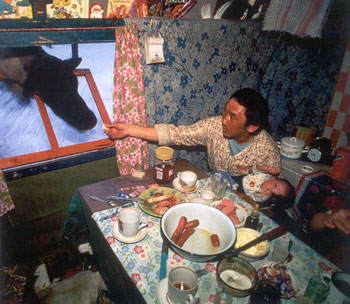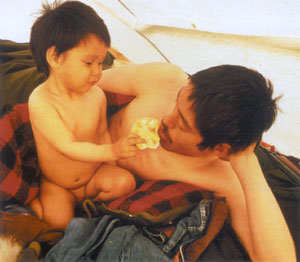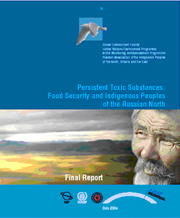| Resources / PTS project |
| PTS project |
Persistent Toxic Substances, Food Security
and Indigenous Peoples of the Russian North is a joint project
established by RAIPON (Association of Indigenous Peoples of the North,
Siberia and Far-East of the Russian Federation), AMAP (Arctic Monitoring
and Assessment Programme), and GEF (the Global Environmental Facility).
The AMAP Assessments have documented how persistent toxic substances (PTS) have a tendency to be transported to, and accumulate in the Arctic region. They also describe how Arctic ecosystems are particularly vulnerable to exposure to PTS, and why certain Arctic indigenous communities in Greenland and Canada have some of the highest exposures to PTS of any populations on Earth. A number of factors, among which the cold Arctic climate, lipid-rich food chains, and lifestyle of indigenous peoples, in particular their reliance on traditional foods, all play an important role. Preliminary studies in the Russian Arctic upto 1998 showed that environmental levels of PTS can be significantly elevated, however the data were sparse and many areas of the Russian Arctic were not covered in these studies. At the same time, as a result of economic changes in Russia, consumption of traditional food by indigenous peoples in the Russian Arctic increased. For these reasons, the Arctic Indigenous Peoples Organizations (Permanent Participants of the Arctic Council), in collaboration with the AMAP Secretariat, initiated, with financial support of the Global Invironmental Facility (GEF), the project Persistent Toxic Substances (PTS), Food Security and Indigenous Peoples of the Russian North. Main objectives of the project:
Anticipated outcomes of the project:
Geographical scope of project:
|
||
 Nenets nomads. Photo: Staffan Widstrand |
||
|
Project activities:
Funding: In addition to GEF funding, the project is financially supported by Canada, Denmark, Finland, Norway, USA, WMO, UNEP, Nordic Council of Ministers, University of Tromsø (Norway) and Salamander Foundation (Canada). Significant in-kind contributions, covering provision of data and information and technical and logistic support, are made by Russian governmental bodies (Ministry of Health, Russian Federal Service for Hydrometeorology and Environmental Monitoring, and Ministry of Natural Resources) and a number of research institutions. Coordination: The project is coordinated by RAIPON and the AMAP Secretariat. The project is a part of the circumpolar assessment and monitoring activities concerning PTS impact on human health conducted by all Arctic countries within the framework of AMAP activities. Project implementation started in February 2001; and was completed in 2004. |
||
 At the nomad camp. Photo: Polfoto / Eugene Fischer |

©
AMAP Secretariat, 2003 |
